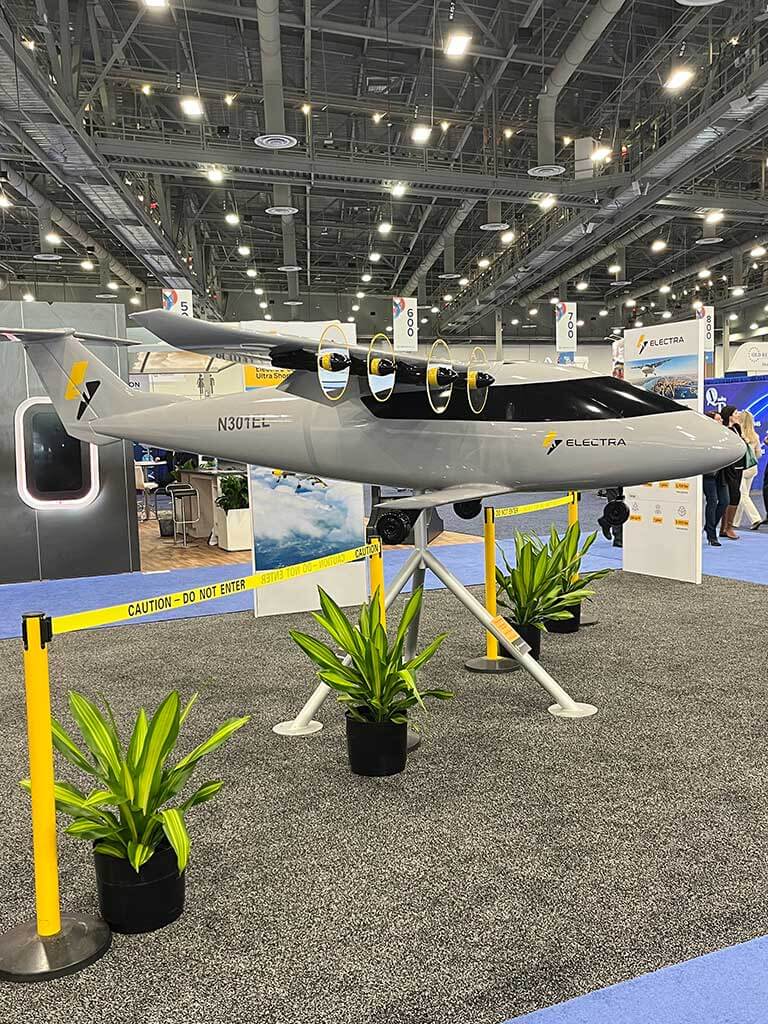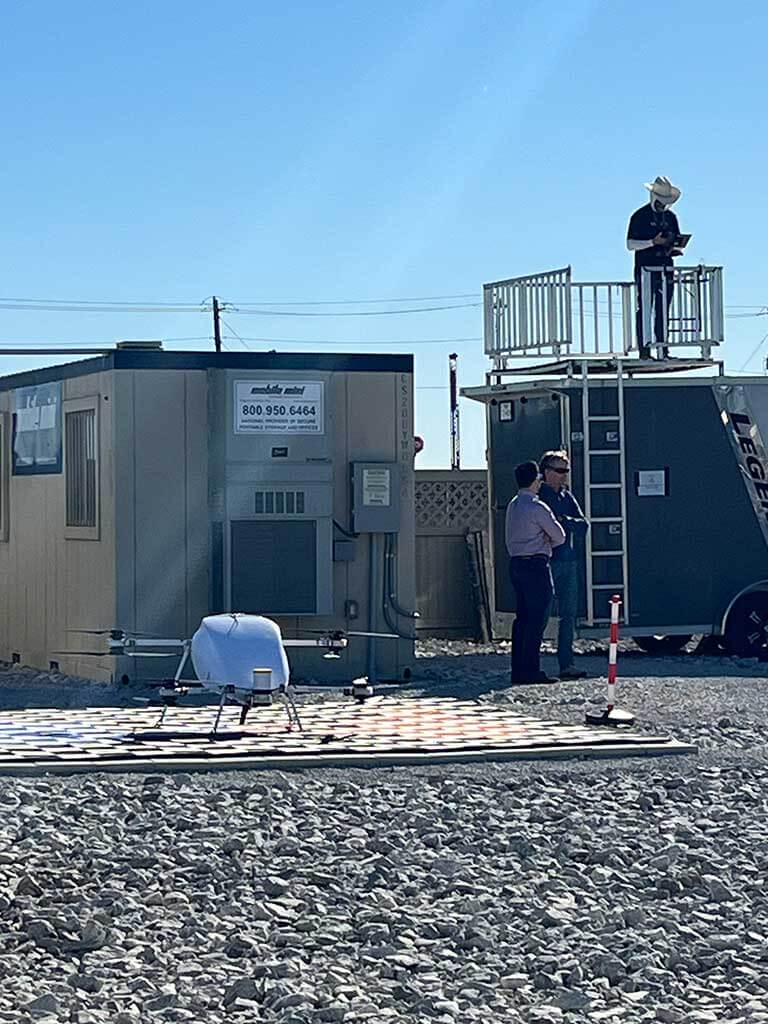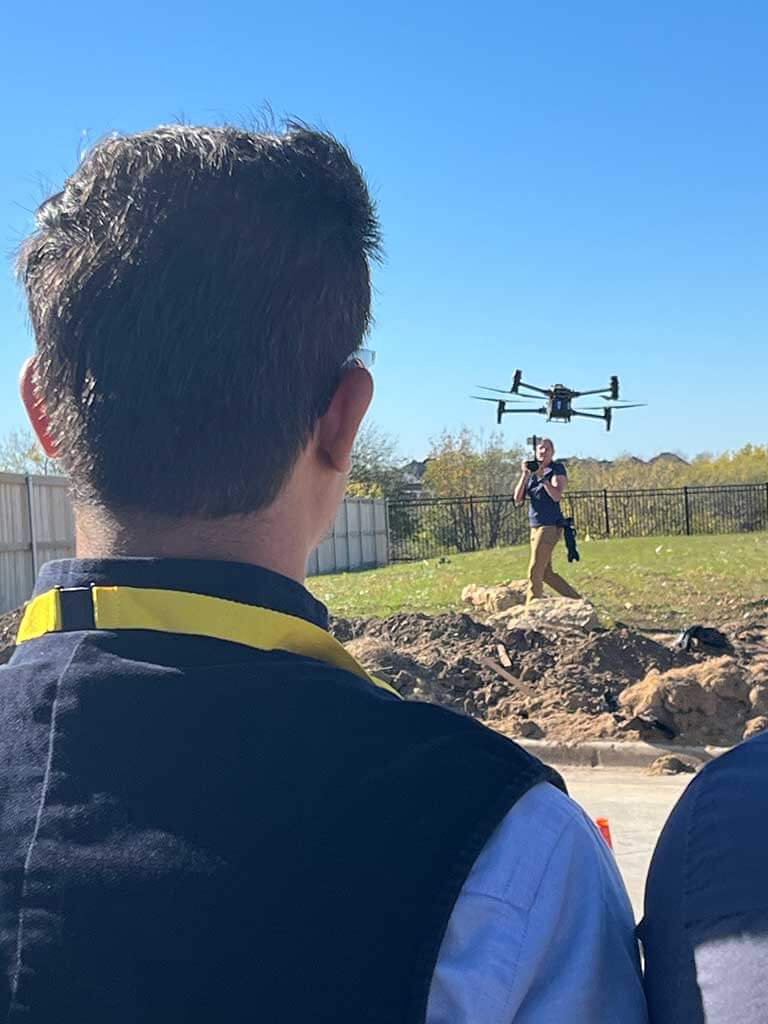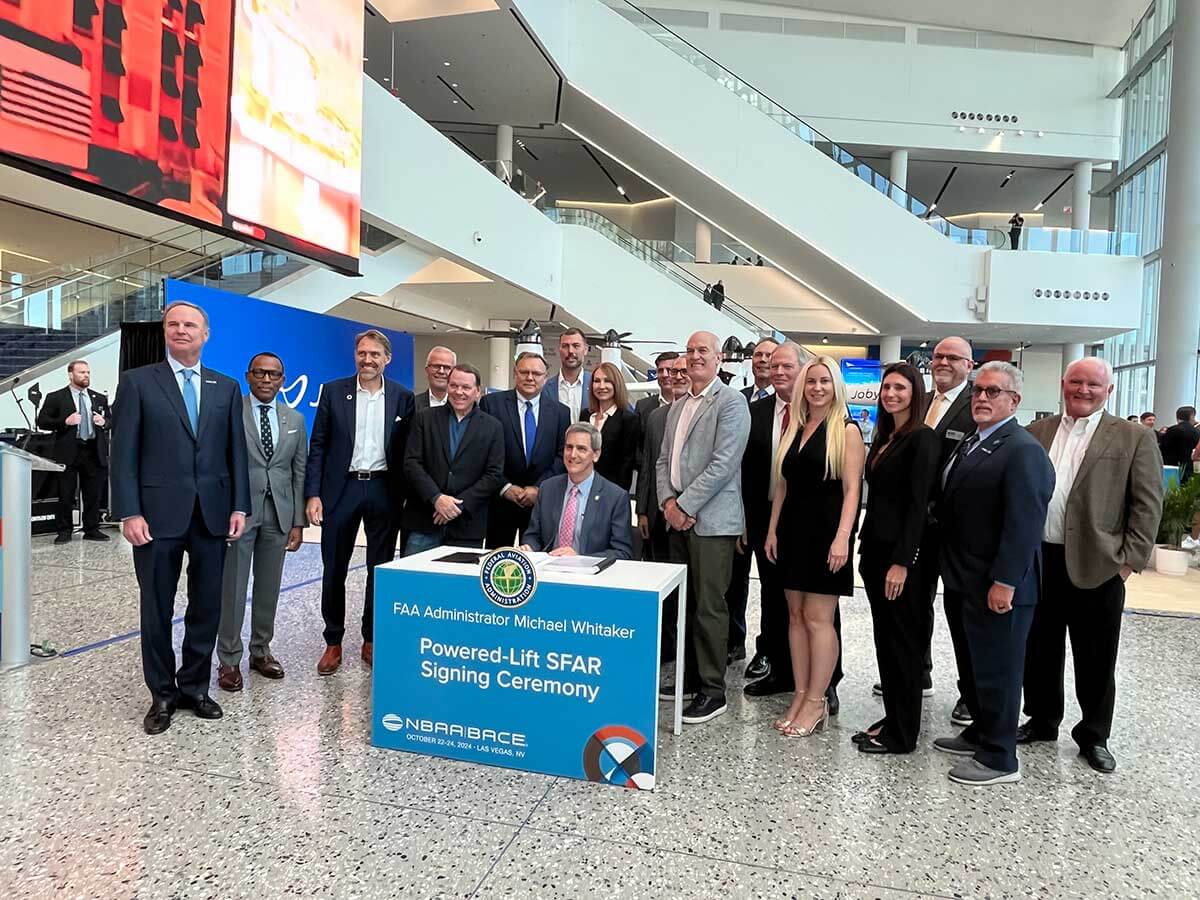Throughout 2024, both the Federal Aviation Administration (FAA) and NASA made significant strides in shaping the future of flight. From historical achievements in drone integration into the National Airspace System (NAS) to cutting-edge exploration of the stars using drones, these agencies have pushed the boundaries of what’s possible in the skies and beyond.
On a recent end-of-year Dawn of Autonomy podcast, Jeffrey Vincent, Executive Director of the FAA’s UAS Integration Office and Jeffrey Homola, Deputy Lead for UTM BVLOS at NASA shared their agency’s top achievements and provided a glimpse into aspirations for 2025. Read on to learn more.

FAA’s Triumphant Trio: Modernizing the Skies
As we reflect on the FAA’s groundbreaking developments in 2024, three key milestones helped set the stage for a new era of innovative aerial operations in the National Airspace System, including implementing UAS traffic management (UTM) systems and forward-thinking regulations.
1. The Dallas Fort Worth Key Site: A UTM Milestone
In a move that Vincent hails as the “biggest achievement of the year,” the establishment of the key site in North Texas marks a pivotal moment for UTM. The implementation of technology “in the wild” has transformed theoretical concepts into practical, everyday operations.
The key site boasts an impressive array of four UTM service providers, Zipline, Wing, ANRA and DroneUp, all operating harmoniously within the same airspace while keeping drones safely separated. What makes this development particularly groundbreaking is its ability to seamlessly integrate multiple operators, including commercial entities and public safety agencies. The system allows for strategic coordination and deconfliction both before and during flights to ensure safe operations in a shared airspace.
This achievement is a testament to the power of collaboration and the data collected will help allow for scalable operations in the future.
2. The eVTOL Revolution: Signing of the Powered Lift SFAR
The second major milestone for the FAA this year was the signing of a final rule for the qualifications and training instructors and pilots must have to fly the “powered-lift” category of aircraft. THis new category of aircraft has the characteristics of both airplanes and helicopters. This nearly 900-page document, years in the making, sets the stage for the certification and integration of electric vertical takeoff and landing (eVTOL) aircraft into the NAS.
The significance of this achievement cannot be overstated. By providing a clear regulatory framework for certifying powered-lift instructors and pilots, the FAA has effectively green-lit advanced air mobility (AAM) operations in the future. This move not only fosters innovation by providing performance-based guidance, but also ensures that safety remains paramount.
3. Forward-Leaning Exemptions: Paving the Way for BVLOS
The third major accomplishment in 2024 involved selected drone companies implementing Beyond Visual Line of Sight (BVLOS) operations thanks to four forward-leaning FAA exemptions. These exemptions, which provide a template for companies desiring to engage in complex operations, allow them to more conduct drone deliveries and use UTM technology.
This development marks a crucial turning point for scaling drone operations across various industries. By allowing for more flexible and extensive drone flights, the FAA has fostered new avenues for innovation in sectors ranging from infrastructure inspection to emergency response.

NASA’s Cosmic Contributions: Pushing the Boundaries of Exploration
NASA’s achievements with drone research in 2024 stand as a testament to the agency’s unwavering commitment to pushing the boundaries of human knowledge and technological capabilities. From innovative drone applications in environmental research to groundbreaking studies during celestial events, NASA has once again demonstrated its pivotal role in advancing our understanding of both our planet and the cosmos. These top three significant developments have not only expanded our scientific horizons but also paved the way for future explorations and practical applications of advanced technologies.
1. The RIOS Project: Revolutionizing River Observation
NASA’s collaboration with the U.S. Geological Survey on the River Observing System (RIOS) project represents a big leap forward in environmental monitoring. By utilizing drones equipped with specialized payloads, scientists can now better characterize river flows and predict surges and contaminant tracking with unprecedented accuracy. This project has the potential to change water resource management and environmental protection efforts.
2. Solar Eclipse Drone Mission: Unveiling Atmospheric Secrets
In a display of scientific ingenuity, NASA deployed a team of engineers and flight crews to upstate New York to conduct drone flights during the 2024 solar eclipse. This mission aimed to study changes in solar radiation on Earth before, during and after the eclipse to gain insights into the atmospheric impacts of these types of celestial events.
The success of this mission not only advanced our understanding of solar phenomena but also highlights the growing importance of drones in scientific research. Drones captured data that would have been difficult or impossible to obtain through traditional means. This paves the way for new approaches in atmospheric and environmental studies.
3. Project ACERO: Enhancing Emergency Response
NASA’s Advanced Capability for Emergency Response Operations (ACERO) project stands out as a critical development in disaster management. Focusing initially on wildfire response, ACERO aims to improve airspace management in complex and dynamic emergency situations.
The project addresses the challenges of integrating drones with traditional crewed aircraft in challenging and complex environments. By developing portable airspace management systems and exploring 24-hour response capabilities, NASA hopes to enhance the safety and efficiency of emergency operations. This work has the potential to positively impact a wide variety of disaster response scenarios, from wildfires to hurricanes and more.

Looking Ahead: Predictions for 2025
As we enter 2025, both the FAA and NASA stand ready to build upon their 2024 achievements with even more ambitious goals.
FAA’s Vision for 2025
Vincent predicts a continued shift towards performance-based regulations within the FAA. This approach will allow for greater flexibility and innovation while maintaining rigorous safety standards. Vincent says the FAA continues to examine how advanced technologies, such as automation and artificial intelligence, can be safely incorporated into the aviation ecosystem.
One of the most anticipated developments for 2025 is the potential publication of the Notice of Proposed Rulemaking (NPRM) for Part 108, to address BVLOS operations. While the timing of the publication is still up in the air, Vincent explained that the “final rule” should “reflect what the industry is doing.”
The FAA also anticipates further expansion of drone delivery services beyond the North Texas area to other locations nationwide. Vincent pointed out educating communities and engaging with stakeholders will continue to play a crucial role in public acceptance and integration, as we move forward.
NASA’s Drone and UTM Aspirations for 2025
NASA’s Homola emphasized that “the future is now” when it comes to UTM and AAM. The agency expects to see continued refinement and expansion of UTM services, not just for drones but also for higher-altitude operations and even stratospheric flights.
The ACERO project should likely expand its focus beyond wildfires to encompass a broader range of emergency response scenarios. The goal is to lead to more robust and versatile airspace management solutions for a wide range of complex operational environments.
NASA’s Air Traffic Management Exploration (ATMx) Project also looks to continue extending its airspace management advancements from UTM to higher airspace operations, autonomous cargo, digital data and public good missions.
Building on the successes of projects like RIOS and the solar eclipse mission,
NASA also foresees further advancements in environmental monitoring and scientific research using drones,

A New Era of Aviation Takes Flight
As we stand at the dawn of 2025, it’s clear that the collaborative efforts of the FAA and NASA will continue propelling us into a new era of aviation and aerospace innovation. Their various achievements in 2024 have provided a solid foundation for the safe integration of drones, eVTOLs and AAM into our daily lives.
The coming year promises to be one of continued growth, learning “by doing” and adaptation. We should expect to see more drones delivering packages, assisting in emergencies and conducting vital research. We hope to witness the first certified eVTOL flights in urban areas. With a focus on performance-based regulations, cutting-edge technologies and an unwavering commitment to safety, these agencies are not just shaping the future of flight – they’re actively creating it.
Watch Jeffrey Vincent and Jeff Homola on the Dawn of Autonomy:
stand out as key milestones in the evolution of emerging aviation and uncrewed aircraft systems. These advancements have helped to set the stage for a new era of safe, efficient and innovative aerial operations in the NAS. From real-world deployments of UAS traffic management systems (UTM) to forward-thinking regulatory frameworks, the FAA’s triumphant trio has provided a solid foundation for the future of flight.

